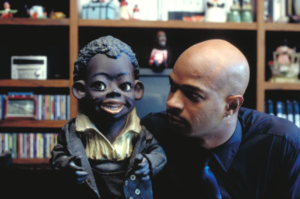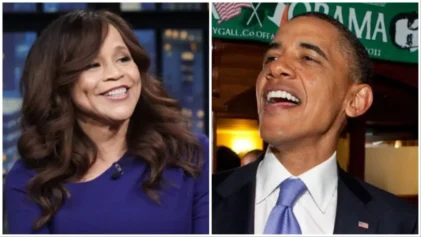“As I bled to death, as my very life oozed out of me, all I could think of was something the great Negro James Baldwin had written, ‘People pay for what they do, and still more for what they have allowed themselves to become, and they pay for it, very simply, by the lives they lead.’”
October 6 marked the 15 year anniversary of Spike Lee’s Bamboozled. The film is a satire that follows Harvard educated television executive Pierre Delacroix (Damon Wayans). Tired of his more intelligent ideas being rejected by his dimwitted white boss, he pitches a show he knows will get him fired and free him to go elsewhere. The show is a new-age minstrel show featuring Black actors in blackface playing up the ugliest Black stereotypes. Much to his chagrin, the show gets picked up and becomes a success.
When Delacroix pronounces “Mantan: The New Millennium Minstrel Show,” it seemed gratuitous at best. The dawning of a new millennium meant a post-Black society. America would become smarter. America would be more respectful toward each other. The old mammy, blackface, and Uncle Tom caricatures of yesteryear were dead and gone.
Fifteen years into this new millennium, it’s become apparent the ideas presented in Bamboozled represented an inherent cycle of racism filtered through the media. Now we get fame hungry, over-sexualized ex-wives/girlfriends/jump-offs. Now we get men with multiple women and children being paraded out in front of cameras as entertainment. The Black performers aren’t wearing blackface but these performers are still Black people being propped up to act out exaggerated truths and generational curses. These shows crossover and become America’s new sensation. This says a lot about America’s interlaced but poisonous obsession with exaggerated Black culture.
As Delacroix becomes high off success, he loses perspective. It’s cringe inducing to see white fans of the show wearing blackface during the movie. In real life, its vomit provoking to hear a white reporter call Black protesters “thugs” but a white gunman a “terrorist”. Now, more than any other time in history, there’s an institutionalized infrastructure in place to exploit exaggerated caricatures.
As Delacroix dies at the end of the film, bemoaning his twisted creation, he watches the caricatures of yesteryear, realizing he’s played a part in repeating the cycle into another millennium. This Black burden still rewinds and plays into 2015.



